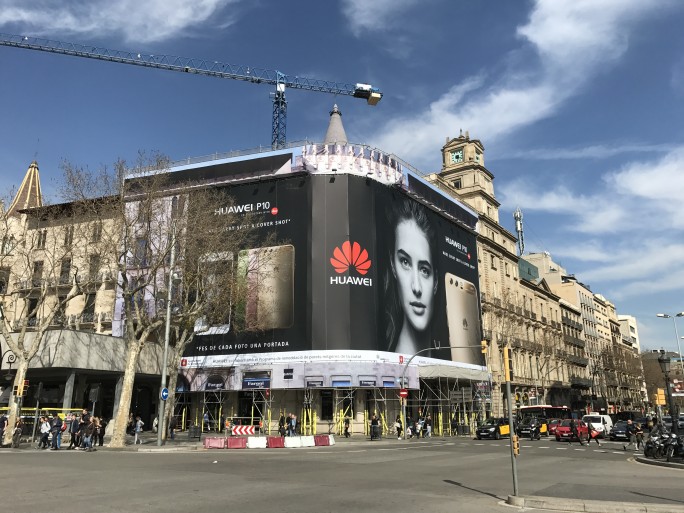MWC 2017: The Biggest Ever MWC Took Over Barcelona But Lacked Excitement

ANALYSIS: The show was bigger and as important as ever but headline announcements were a premium. What next for Barcelona and the MWC megashow?
Mobile World Congress (MWC) 2017 was officially the biggest in the event’s history. That doesn’t really feel like news to the 108,000 visitors, and definitely not for the 3,500 media and analyst attendees, as the press room can testify.
The eight halls of the Fira Gran Via occupied 115,000 square metres, while the Fira Montjuïc covered 50,000 metres with the 4 Years From Now (4YFN) startup conference and the Youth Mobile Festival (YoMo) held at the former main venue.
It’s the closest thing the technology world has to a tech Olympics. Sure, you could argue the Consumer Electronics Show (CES) in Las Vegas is similar, but the fragmented nature of the telecoms industry and its elongated supply chain means it’s a much more diverse audience.
Read More: The story of MWC 2017
Mobile World Capital
And while Las Vegas is accustomed to large numbers of visitors and the whole city is geared towards tourism, not that Barcelona doesn’t have tourists of course, MWC takes over the city.
Indeed, 208 countries were represented at MWC 2017, and the 2,300 exhibitors included mobile operators, phone makers, car manufacturers and established IT giants like HPE and IBM. Even the National Basketball Association had a stand.
And the show makes itself known beyond the Fira. Sunday’s press conferences were located across the city, while the hotels and restaurants are filled with attendees.
On Wednesday evening, FC Barcelona beat Sporting Gijon 6-1 in front of their lowest attendance of the season, but the official figure of 56,603 would have been lower still but for MWC and those eager to sample the famous Camp Nou stadium. Although there is of course the possibility that tech organisations could have block bought tickets and, erm, not turned up.
The Plaza Catalunya in the centre of the city is overlooked by an Apple Store and a ‘Mobile World Capital’ building but for MWC it played host to a Samsung Pay pop-up shop and a giant Huawei advertisement. Everywhere you go, MWC is there.
Ever since it snared MWC away from Cannes, Barcelona has been keen to ensure the show stays there with the Mobile World Capital initiative. The GSMA predicts the event will have contributed more than €465 million to the local economy and is directly responsible for 13,200 jobs.
Story of the show
But despite being bigger than ever, it still felt that MWC 2017 was fairly low key. Not that there wasn’t plenty of news – far from it, as the pages of Silicon can testify.
But the story of the show is the revival of the Nokia 3310, a refreshed version of the 2000 classic that is as far from today’s smartphones as you can get.
The hype generated has led to numerous pieces about whether we’ve lost interest in smartphone innovation and this column will attempt to abstain from such naval gazing, but there is no doubt that few phones generate buzz anymore.
The absence of a Samsung handset launch was a significant factor, but Huawei, LG, Sony and BlackBerry all announced new flagship smartphones.
Strong growth
MWC itself is looking beyond smartphones as mobile graduates from being a subset of technology to becoming the technology industry itself. The NEXTech exhibition in Hall 8 played host to drones, virtual reality, robotics, AI, Internet of Things (IoT) applications and even graphene.
As its scope expands, MWC will have to expand beyond the Fira. The new facility was completed only a few years ago, but already feels crowded. The GSMA’s Innovation City moved to Hall 4 this year, previously one of the few parts of the exhibition centre that were uncrowded as access to the conference hall is restricted.
It’s possible that as mobile becomes IT itself, MWC will contract and we will see the creation of several different shows, but it is likely it will only become bigger.
The economic benefits will be greater but so will the cost to local residents. After all, the city will host MWC until at least 2023.
What next?
An ‘Anti-MWC’ movement has been established by those who oppose the business practices of technology companies, such as working conditions and surveillance, and protesters reportedly marched through the city during the week complaining about the impact on rents and other infrastructure such as transport.
On the new Line 9 of the Barcelona Metro, the number of passengers more than doubled during the conference, although it’s worth noting this line only opened in 2016 to help manage this traffic
But the rhetoric at the show was clearly geared towards the presentation of mobile technology as a force for good with themes such as economic empowerment, gender equality and saving the environment. Even if Greenpeace seemed to object to Samsung’s handling of electronic waste following the Galaxy Note 7 debacle by protesting at the Korean firm’s launch event.
But no matter where you stand on that particular argument, it’s evident that MWC is the most important show of the year and that’s unlikely to change going forward. Barcelona is also a welcome antidote to the Las Vegas-San Francisco axis that dominates our industry.
Just a few more surprises next year would be nice, that’s all.